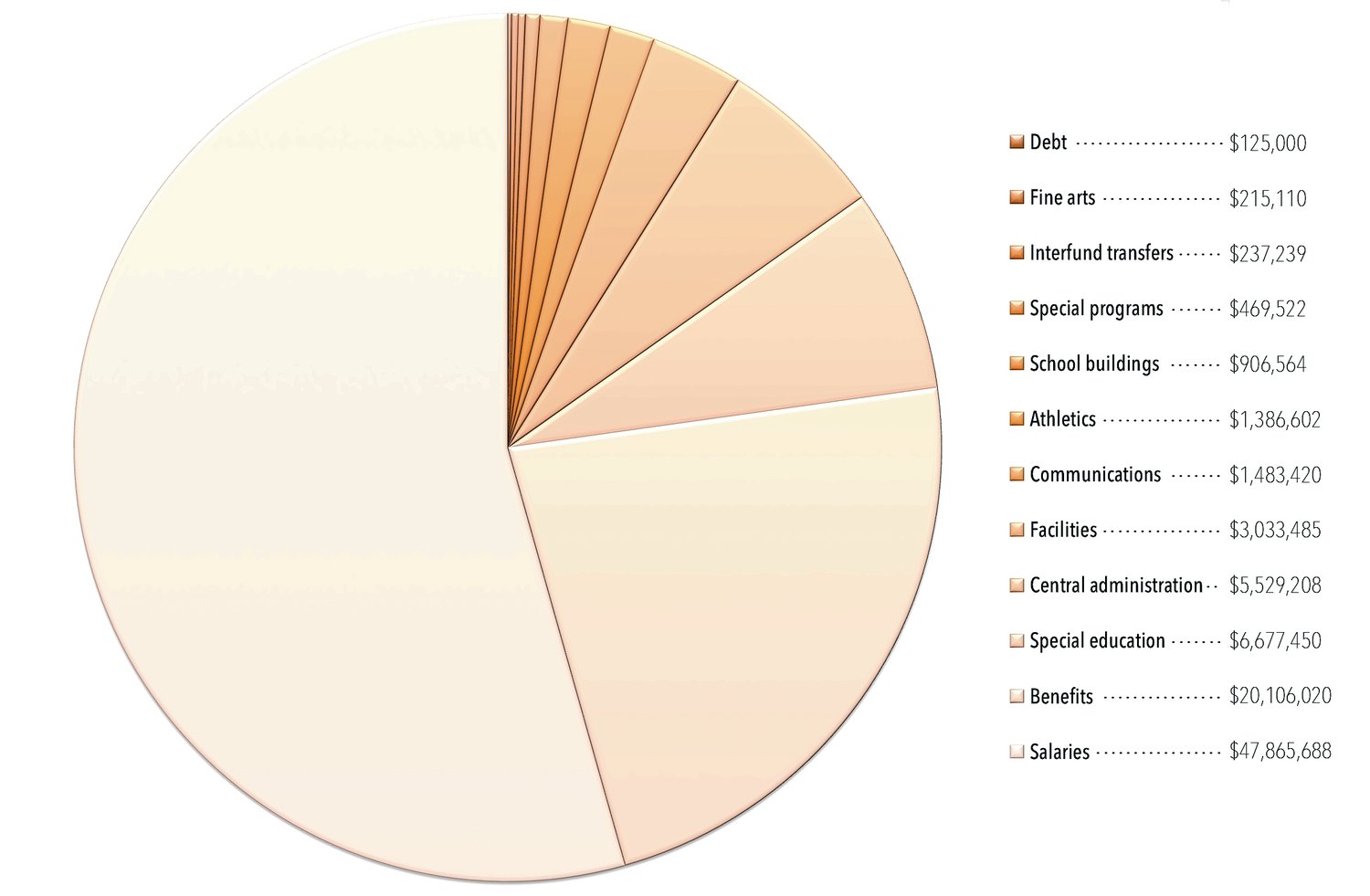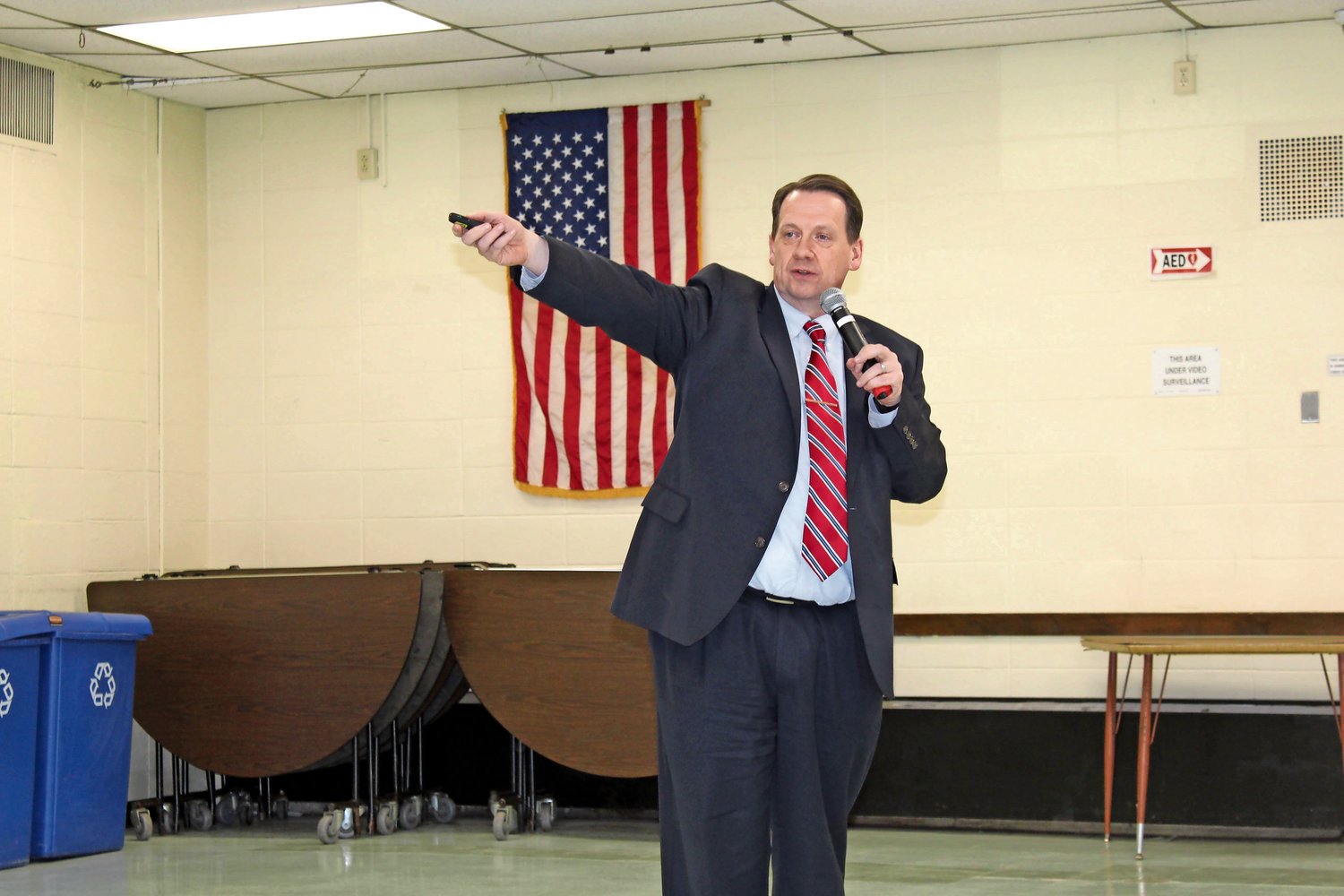Lynbrook school officials present $88 million budget plan
Lynbrook School District administrators presented the Board of Education with their $88 million budget plan for the 2019-20 school year on Feb. 27. If approved, the budget would be 3.33 percent, or about $2.8 million, larger than the district’s 2018-19 spending plan.
To fund the increase, the district would use $4.36 million it collected from the eight properties that pay payments-in-lieu-of-taxes, or PILOTS, and $1.18 million in reserve funds to pay for specific line items, including employee benefits and workers’ compensation claims.
That would leave $68.86 million for the district to collect from taxpayers, which falls under New York state’s 2 percent tax cap limit. Paul Lynch, the assistant superintendent for finance, operations and information systems, told the Herald that he could not determine the impact on the average taxpayer, as Nassau County has not yet issued the district’s assessment values under its re-assessment plan for 2019.
The budget proposal
One of the main reasons the budget would increase next year, the administrators explained, is due to an increased need for staff. Maureen Berman, the assistant superintendent for personnel, said the district is likely to add 19 more students to the Kindergarten Center next year, and would need to add an extra class to serve those students.
“To account for that class, we’re going to have to physically add a room in the Kindergarten Center,” Lynch said. The construction, he said, would be funded in the district’s facilities budget.
Additionally, the district would need staff for additional integrated classes in fifth-grade at Marion Street Elementary School and West End School, reading specialists in the middle schools and a director of guidance to replace the district’s guidance chairperson. At the facilities level, the district would need to convert rooms at Marion Street School to accommodate for the large student body, and administrators are also planning to add another internet pipe at North Middle School.
“We’ve had some syncing issues,” Lynch explained at the meeting. “We’ve had some syncing issues, the internet’s been incredibly slow the past few days, and we need to accommodate for the robustness of our program.”
Other increases, he said, come from the district’s $28.9 million bond, which voters approved in 2017. Lynch said that the district would need a financial advisor and a bond attorney to oversee the bond process, and more asbestos testing would have to be done before work on the bond projects can begin.
Other propositions
Voters would also be asked to approve the district’s use of reserve funds to pay for projects that were not included in the budget when they go to the polls in May.
Under the budget plan, the second proposition on the ballot would allow the district to use $473,000 in reserve funds to pay for technological upgrades, including new devices for ninth grade students and the expansion of the Actiontec project. Actiontec enabled middle school teachers in the district to use any device to project notes when a virus infected the district’s desktop computers last month. The proposal would expand Actiontec to the high school and elementary schools.
The second proposition would ask voters to allow the district to use $2.45 million to fund renovations to the school buildings. $2 million of those reserve funds would pay for a new elevator at Marion Street, which Trustee Heather Hanson said comes “not a moment too soon.”
The Board of Education is expected to approve the budget proposal at its March 13 meeting.

 44.0°,
Mostly Cloudy
44.0°,
Mostly Cloudy 







